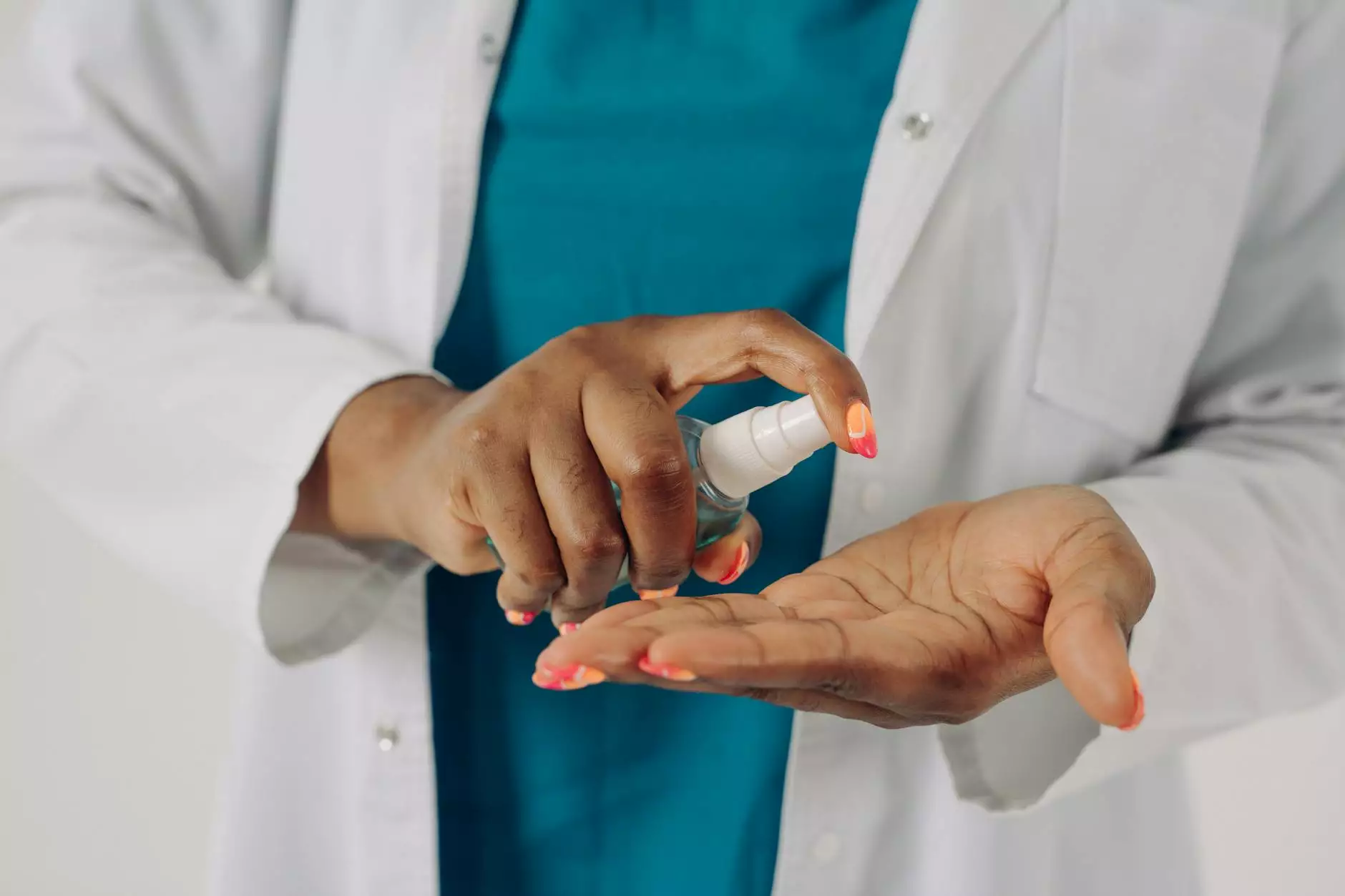Understanding Surgical Disinfectants: The Backbone of Infection Control in Healthcare

Surgical disinfectants play a crucial role in maintaining the highest standards of hygiene and safety within healthcare environments. They are indispensable tools for surgeons, medical professionals, and healthcare facilities striving to prevent infections and ensure patient safety. In this comprehensive guide, we will explore the various aspects of surgical disinfectants, their types, uses, and importance in modern medicine.
What Are Surgical Disinfectants?
Surgical disinfectants are specialized chemical agents designed to eliminate or reduce harmful microorganisms on surfaces, instruments, and skin before surgical procedures. Their primary goal is to minimize the risk of infections by effectively killing bacteria, viruses, fungi, and spores.
The Importance of Surgical Disinfectants in Healthcare
Infection control is a cornerstone of patient safety in any medical setting. The importance of surgical disinfectants cannot be overstated due to their following key roles:
- Preventing Surgical Site Infections (SSIs): SSIs are one of the most common complications following surgery. Surgical disinfectants significantly reduce the risk of SSIs by ensuring that surgical instruments and environments are free from pathogens.
- Protecting Healthcare Workers: In addition to safeguarding patients, these disinfectants protect healthcare professionals from exposure to potentially infectious materials.
- Ensuring Compliance with Health Regulations: Healthcare facilities must adhere to strict health regulations. Utilizing effective surgical disinfectants is essential to maintain compliance and uphold medical standards.
- Enhancing Patient Trust: Hospitals and clinics that maintain high hygiene standards are more likely to gain patients' trust, leading to increased patient satisfaction and better outcomes.
Types of Surgical Disinfectants
Surgical disinfectants can be categorized based on their active ingredients and intended use. Here are the primary types used in healthcare settings:
1. Alcohol-Based Disinfectants
Alcohol-based disinfectants typically contain isopropyl alcohol or ethanol. They are effective against a broad spectrum of microorganisms but have limited efficacy against bacterial spores. They are commonly used for hand sanitization and cleaning small surfaces.
2. Chlorine Compounds
Chlorine-based disinfectants, like sodium hypochlorite, are powerful agents that are highly effective against a range of pathogens, including bacteria and viruses. However, they require careful handling due to their corrosive properties.
3. Quaternary Ammonium Compounds (Quats)
Quaternary ammonium compounds are often used for disinfecting non-critical medical equipment and surfaces. They are effective, stable, and relatively low in toxicity, making them suitable for many healthcare applications.
4. Hydrogen Peroxide
Hydrogen peroxide is an eco-friendly disinfectant that can effectively kill bacteria and viruses. It decomposes into water and oxygen, which makes it a safe option for disinfection.
5. Phenolic Compounds
Phenolic compounds are potent disinfectants that are particularly effective against bacteria. They are often used in industrial and hospital settings, but care should be taken as they can be toxic in high concentrations.
How to Choose the Right Surgical Disinfectant
Selecting the appropriate surgical disinfectant involves considering several factors:
- Type of Procedure: Different surgical procedures may require different levels of disinfection; understanding the level of risk associated with the procedure is crucial.
- Surface Material: The disinfectant must be compatible with the materials it will be used on to avoid damage.
- Efficacy: Ensure that the disinfectant is proven effective against the pathogens of concern.
- Regulatory Compliance: Choose disinfectants that meet the local regulatory requirements and standards for safety and effectiveness.
Application of Surgical Disinfectants
Correct application of surgical disinfectants is critical to ensure their effectiveness. Here are some guidelines that healthcare professionals should follow:
1. Preparation
Before applying a disinfectant, surfaces and instruments should be cleaned to remove any visible dirt or organic matter that may protect microorganisms from the disinfectant action.
2. Dilution
Follow the manufacturer’s instructions for the appropriate dilution of the disinfectant, if necessary. Concentration can significantly impact effectiveness.
3. Contact Time
Allow the disinfectant to remain wet on the surface for the recommended contact time to ensure that it effectively kills pathogens. This may vary by product.
4. Rinsing
Some disinfectants may need rinsing to avoid toxicity on surfaces. It is imperative to follow the label instructions regarding rinsing if applicable.
Challenges in Disinfection Practices
While surgical disinfectants play a vital role in infection control, several challenges persist:
- Resistance Development: Overuse of certain disinfectants can lead to microbial resistance, making it essential to use a variety of agents and strategies in disinfection.
- Human Error: The effectiveness of disinfection can be compromised by improper application or staff negligence.
- Cost: Budget constraints in healthcare can limit access to high-quality disinfectants, impacting infection control measures.
The Future of Surgical Disinfectants
As advancements in science and technology continue to evolve, the development of new and improved surgical disinfectants is on the horizon. Future trends may include:
- Green Disinfectants: Eco-friendly disinfectants that pose minimal risk to health and the environment are becoming increasingly popular.
- Nanotechnology: Incorporating nanotechnology may enhance the effectiveness and penetration of disinfectants, leading to better microbial kill rates.
- Smart Disinfectants: Future innovations may lead to smart disinfectants that can change color when they have degraded, signaling the need for reapplication.
Conclusion: The Crucial Role of Surgical Disinfectants in Healthcare
In conclusion, surgical disinfectants are vital components of infection control strategies in healthcare settings. By preventing infections, they protect patients and healthcare providers alike, ensuring that medical facilities can operate safely and effectively. Understanding the types of disinfectants, their applications, and best practices is essential for all healthcare professionals.
At Medalkan, we prioritize the highest standards in medical supplies and are committed to providing top-quality surgical disinfectants and other necessary healthcare products. By investing in reliable surgical disinfectants, healthcare facilities can better safeguard the health of patients and staff, leading to improved outcomes and reduced infection rates.









